We tell how to choose a laminate for different types of heating floor: electrical, infrared and water.
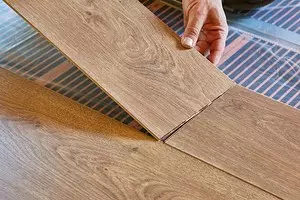
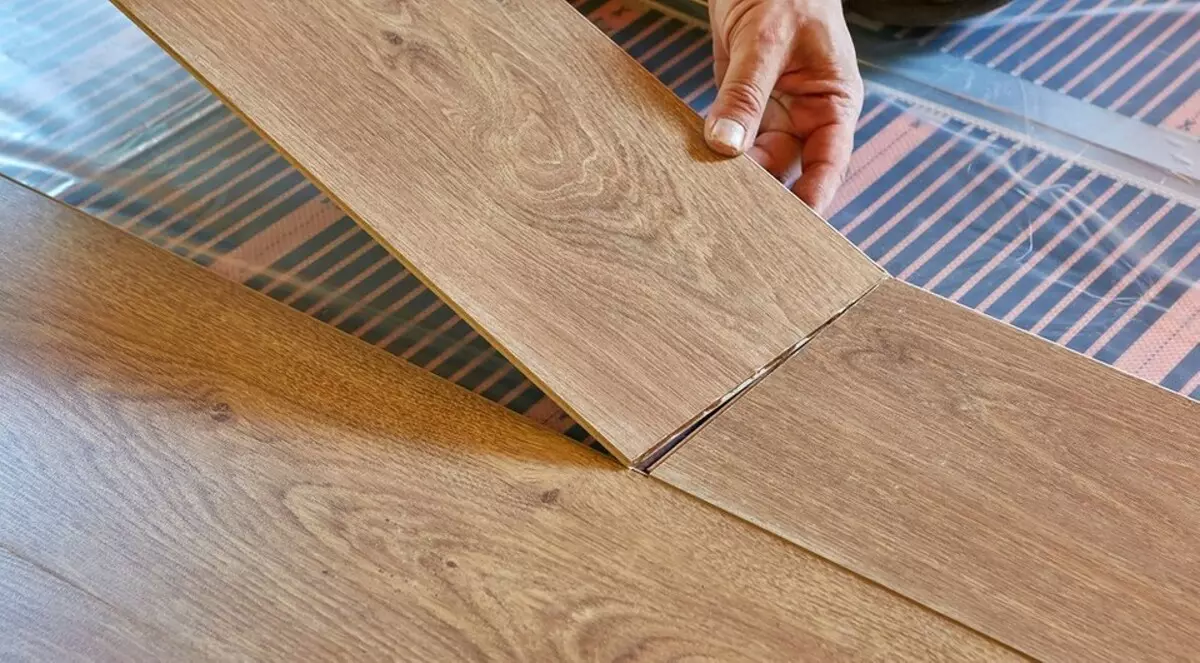
The laminated coating was originally intended for laying on the heating basis. Many know about it and do not even consider such a finish option, preferring ceramic cladding or some types of linoleum. But modern models are others. Among them are those designed specifically for the heating base. We will deal some laminate to choose for warm water and electric floors.
Choose laminate for a warm floor
What should be finishSPECIAL MARKING
Choose a laminated board for different systems
- For electric
- infrared
- Water
Features of the decoration for heating floor
Laminate is a multilayer finishing material. Its base is a high-density fibreboard. Kraft paper is superimposed on it, decorative, and then a protective layer. Connecting in this "Pie" is the melamine resin. In the latter, the formaldehyde dissolved in water is necessarily present. The substance is toxic, but in small concentrations safely.
On the warmth, it is impossible to put any laminated board. We list the requirements that determine which laminate is suitable for a warm floor.
Laminate selection criteria for warm floors
- Increased resistance to heating. In conventional panels, the laminating film is softened and deformed and deformed, a toxic formaldehyde is released. The heat-resistant material is heated to 27-30 ° C without changing performance properties.
- Low emission. With increasing temperature, melamine resins are destroyed, which is accompanied by the release of formaldehyde. A classification has been developed that takes into account the emission of toxic substances. Suitable for laying on the heating basis is the material with the E1 or E0 marking. Laminate, marked by E0, practically does not allocate formaldehyde.
- Increased thermal conductivity. An ordinary laminated board is poorly carried out, is, in fact, the heat insulator. It is bad because it takes a significant amount of heat that goes from the heating system. Therefore, material with increased thermal conductivity is required. Standards regulate that it cannot be higher than 0.15 W / m · k.
- Connection type. Any embodiment of a lock type is allowed. Adhesive is not allowed. The adhesive mass does not allow the board to change the dimensions under the influence of elevated temperature. The coating is deformed and spars.
- Laminet thickness. The boards are thicker, the lower its thermal conductivity. Therefore, the optimal is the thickness of 7 to 9 mm.
Another important point is the choice of the substrate. The laminated board can not be laid without a shock absorbing layer. She is too "loud." In addition, without a substrate, lock connections on the plots where the base is not well aligned, broken. It is necessary to choose a shock absorbing material, taking into account that the thermal conductivity of the finish coating is low. Therefore, to take a substrate with similar properties can not, otherwise they will detain most of the heat that goes from the heating system. A good option is a rubber canvas, but it is expensive. No less effective, although cheaper, perforated plates made of polyethylene or polystyrene foam. Special construction perforated cardboard is suitable.
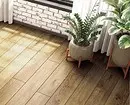

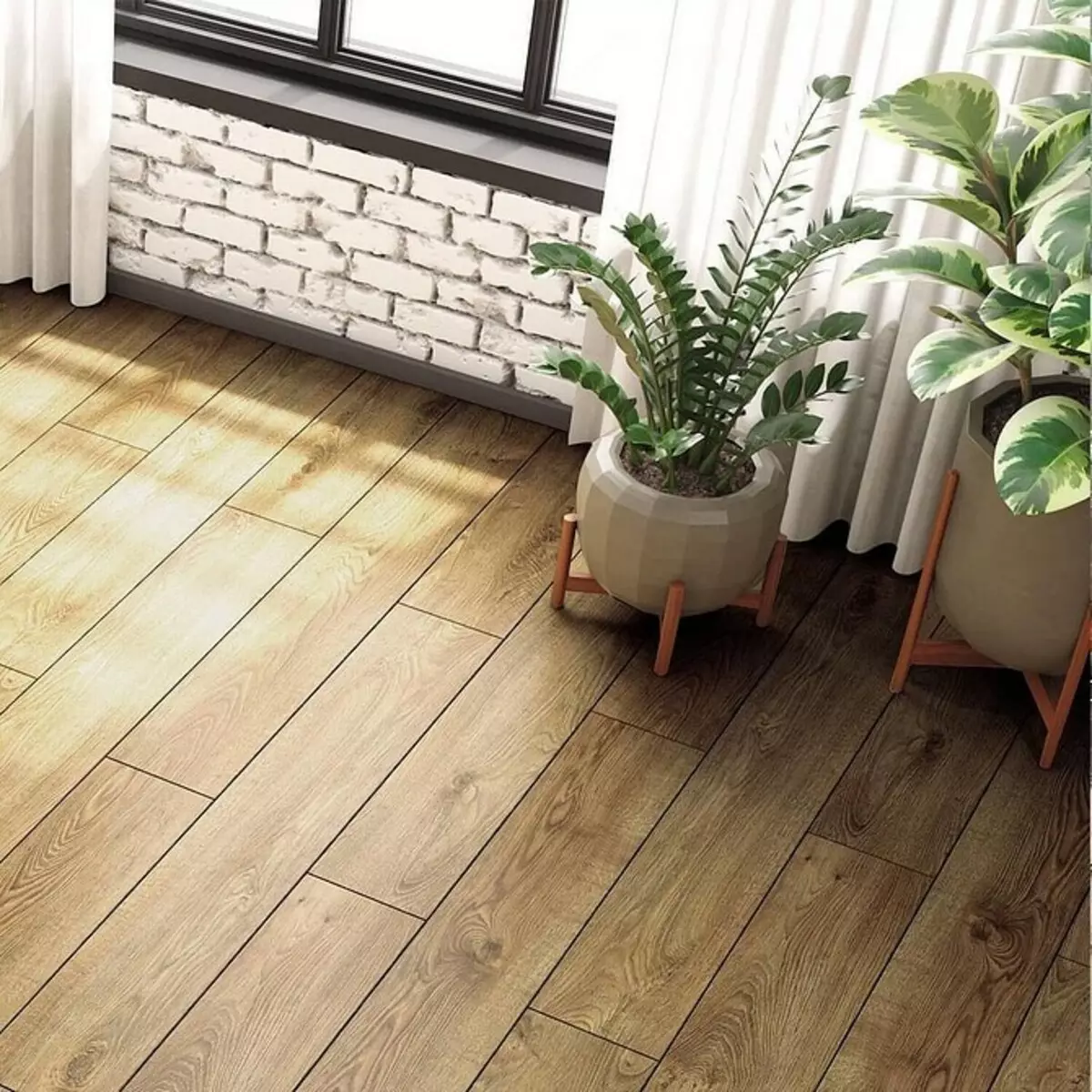
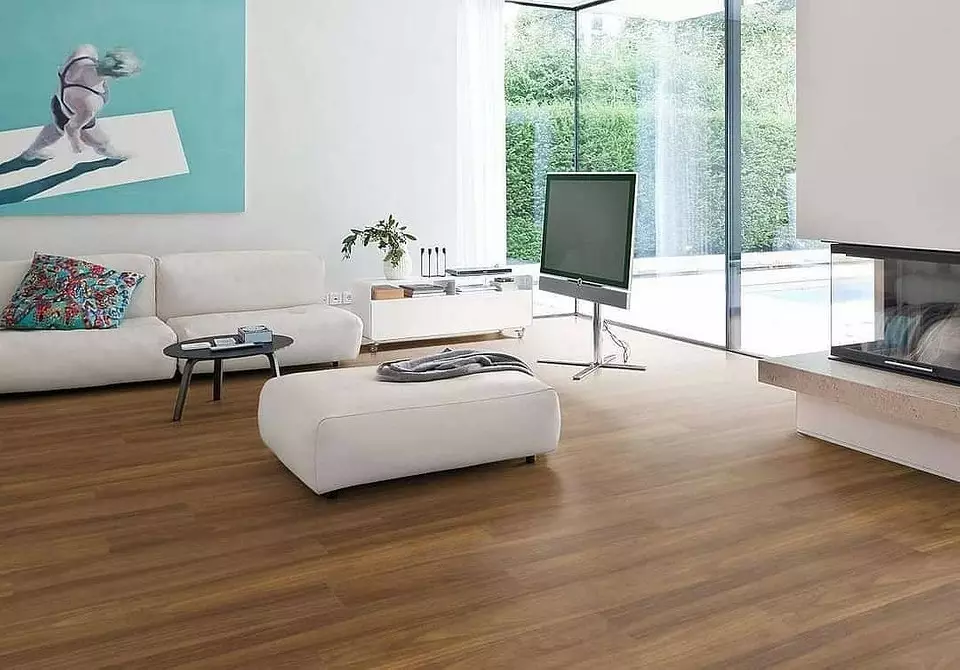
SPECIAL MARKING
For decoration, which is intended for laying on the heating system, a special label is used. Icons are different. We list all their modifications.
- Figure depicting the heating element. It is stylized in the form of the letters U either S.
- Seasoned to top vertical arrows, symbolizing the rising heated air.
- H2O, the chemical formula of water, denotes compatibility with water type heating.
On the possibility of using over a warm floor, inscriptions located on the package: "Underfloorheating" or "Warmwasser". About marking The manufacturer necessarily indicates the type compatible with the heating system and operating temperature range.
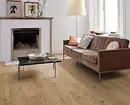
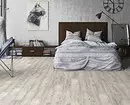
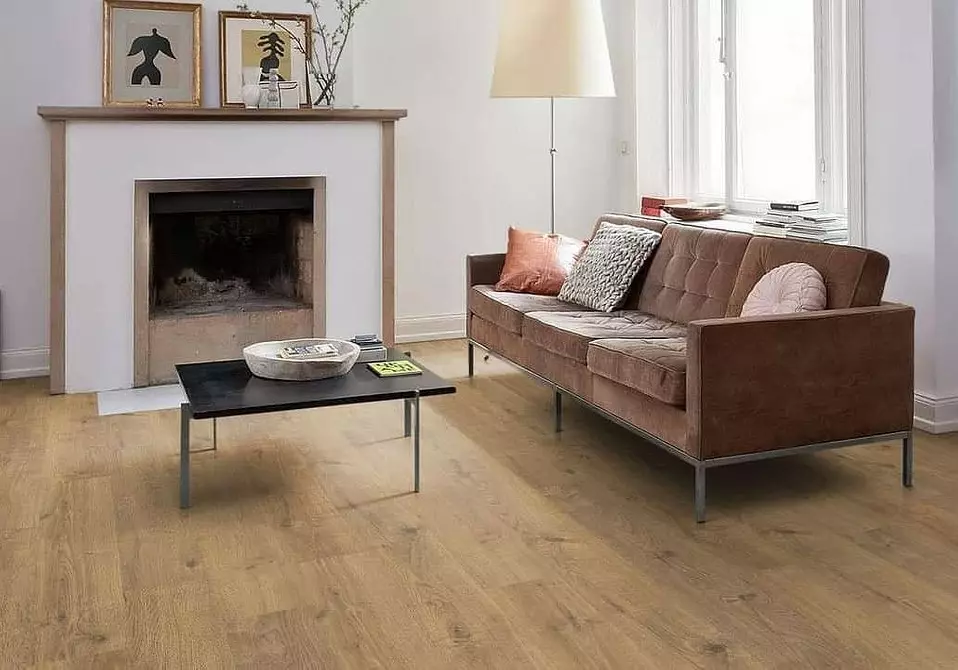
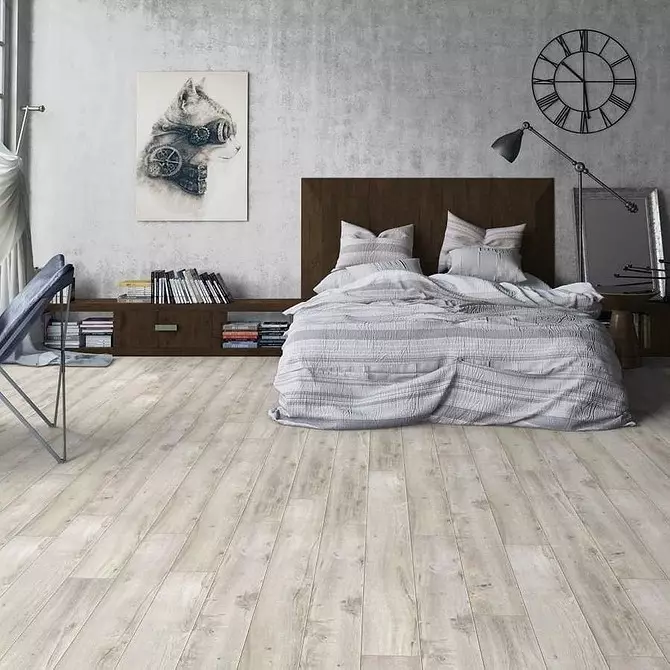
What laminate can be put on a warm floor of different types
To damn the premises, various types of heating systems are used. We will analyze what laminated board to choose for each.Electric heaters
This is a heating cable or mats. In the second embodiment, this is also a cable, but fixed on the substrate. Mats easier to lay and connect. For the correct operation of electrical heaters, after connecting them, they are filled with a screed. Therefore, the concrete surface is heated to sufficiently high temperatures, which is important to remember when choosing a facing.
The advantages of the heating system are considered to be quite simple installation, efficient operation and the ability to adjust the temperature in the rooms through a thermostat. Of the flaws, you need to know about the dependence on electricity, a high price for energy and maintenance.
Criteria for choosing cladding for electric heaters
- The maximum resistance to heating is best that the resolved temperature is 30 ° C and above.
- Low emission of toxic substances, marking E1 or E0.
- Increased thermal conductivity.
- Resistance to mechanical impacts, abrasion. Class 32 or higher.
The icon must be present, indicating that the material is allowed to use as an outdoor coating over heating base.
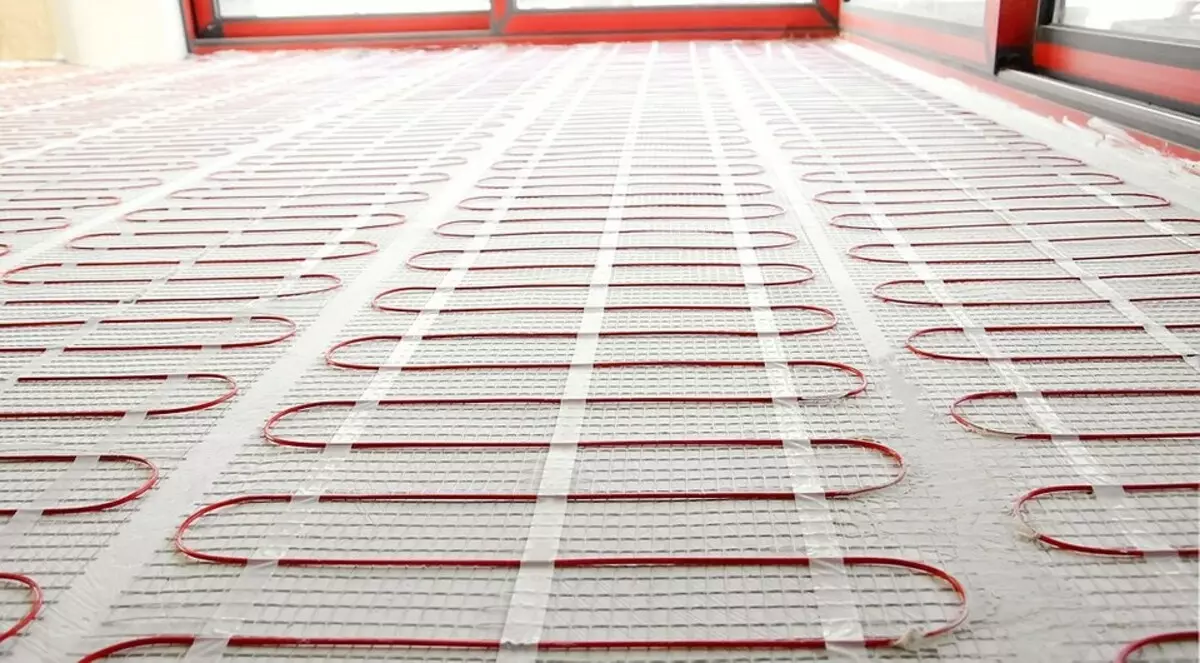
Infrared film
It works from electricity, but the principle of action is different. Carbon elements emit infrared radiation accumulated in surfaces that are heat in the air. The advantages of IR heating include uniform soft heating, cheap service, fast heating, efficiency. For laying, you do not need a screed. The minus is considered expensive material and installation, sensitivity to high humidity.How to choose a laminate for infrared film
- Moderate durability to heat, values from 27 ° C and above are allowed.
- Increased strength and wear resistance, because during damage to the lamellas, the film may be damaged. The class of laminated panels - 33-34, thickness - 8-9 mm.
- Low emission, Marking E0-E1.
- Increased thermal conductivity.
The packaging should indicate that the material is compatible with IR heaters.
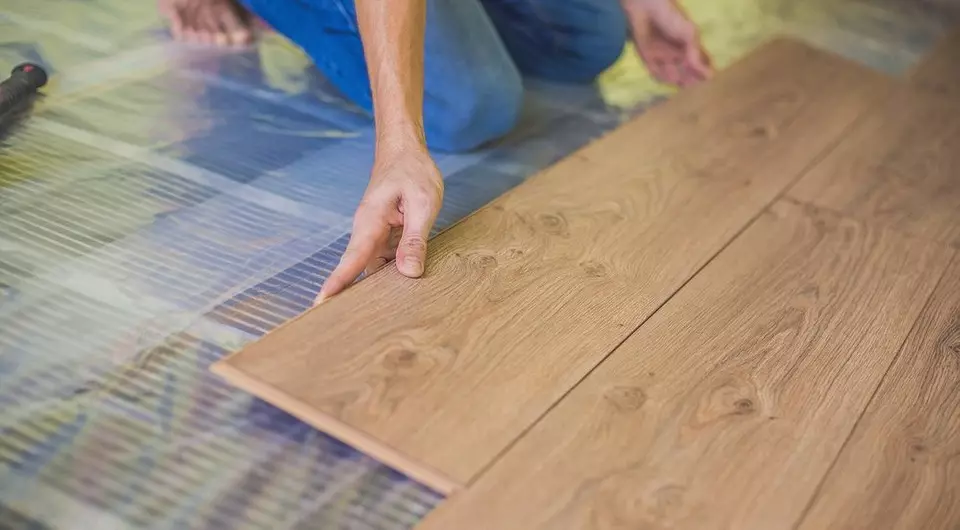
Water
This is a closed contour from pipes laid in a dry or wet tie. When the warm water is filled, heats up and gives heat into the room. Dignity is considered independence from electricity, low cost of maintenance, safety of operation. Of the minuses it is necessary to note the installation long-term installation, since it is necessary to arrange a screed, the likelihood of leaking, the complexity of repair, during operation there is a possibility of condensation. In addition, the water floor can be mounted only in a private house. It takes into account when choosing a finish. Let us explain what laminate is suitable for water warm floor.Criteria for the seminal floor selection for water system
- Increased wear resistance, class 33 or 34.
- High resistance to moisture. It should not be deformed when condensate on a concrete basis.
- Allowed heating to 27 ° C and higher.
- The thickness of the plates is 8-9 mm.
On the lamellae packaging should be marked "Warmwasser", H2O, "Underfloorheating."
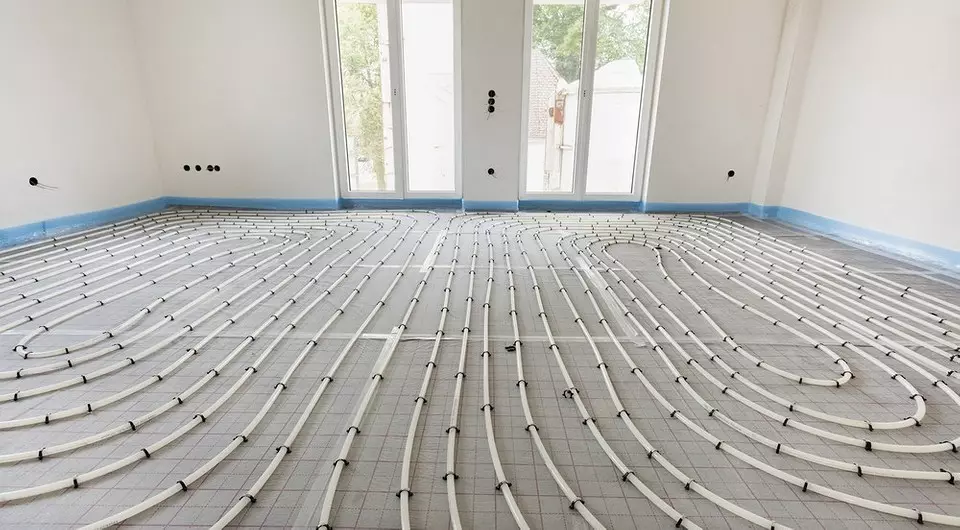
Recently there appeared laminate with built-in heating elements. Its installation is made by assembling lock-type connections. Heating lamellas can be laid in front of the usual. So, if necessary, heating zones are created. This innovative material should not be confused with a laminated board, laid on the heating basis. These are different coatings, each of which performs its own task.



